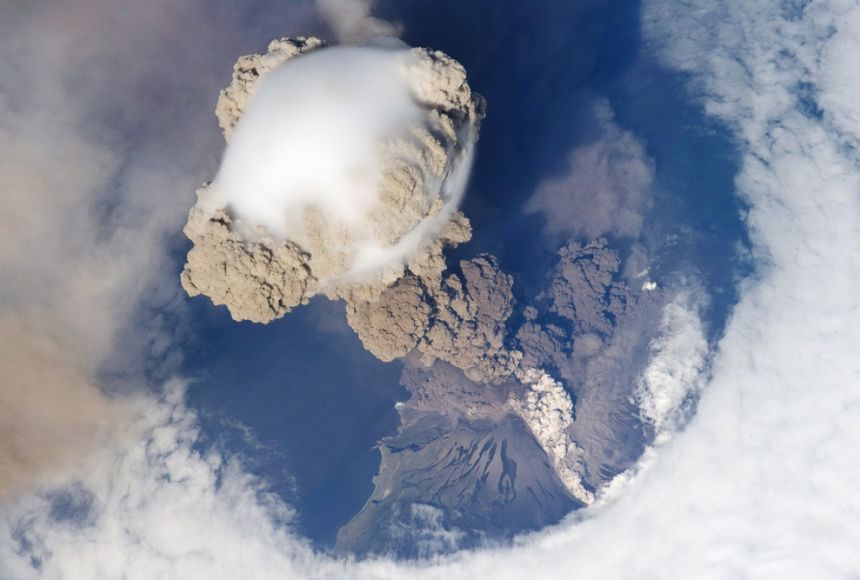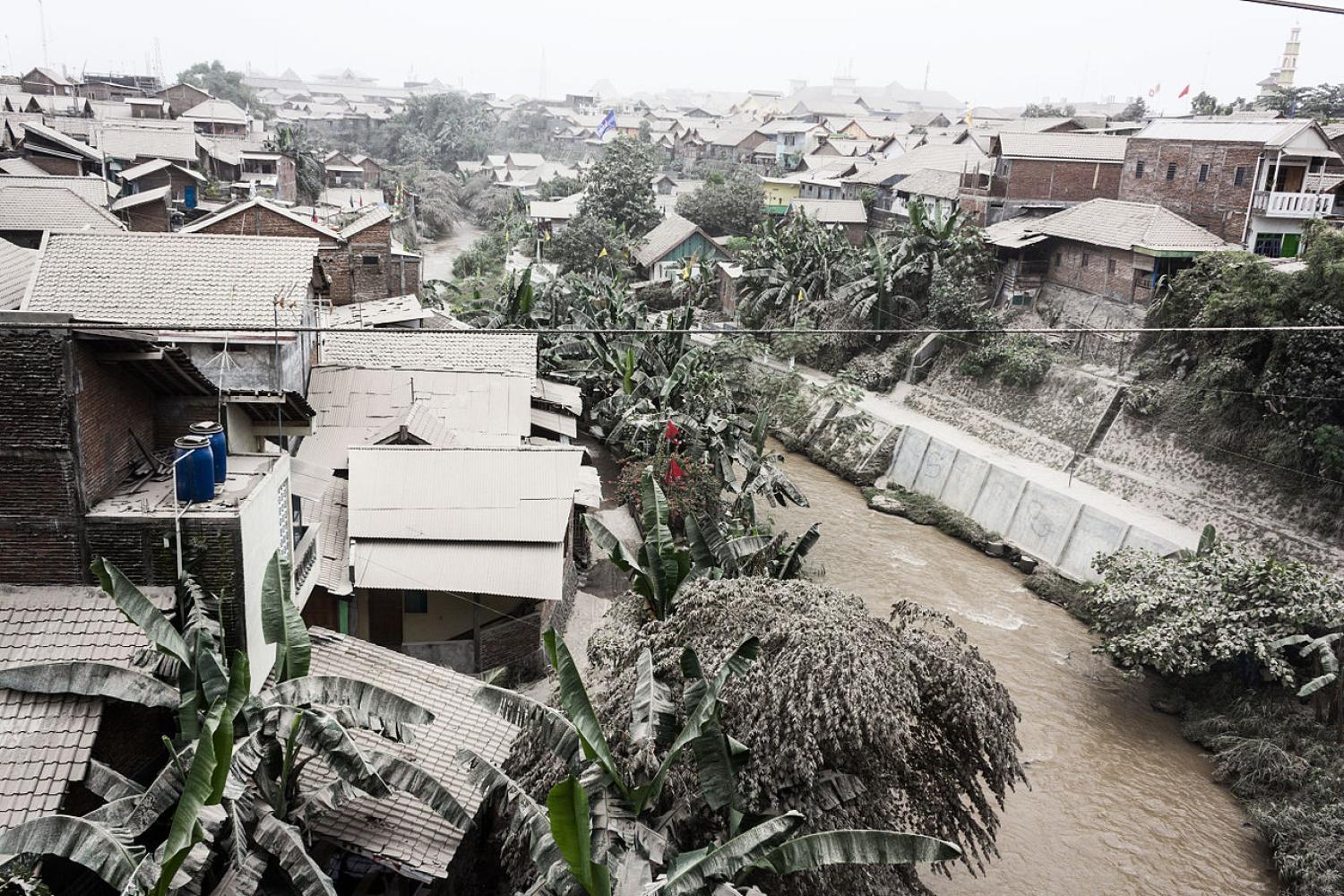Introduction
Volcanic eruptions are natural phenomena that have both immediate and long-term effects on the environment. One of the most significant consequences of volcanic activity is the release of volcanic ash into the atmosphere. This fine particulate matter can travel long distances, affecting air quality, climate patterns, and various ecosystems. In this blog post, we will explore the impact of volcanic ash on the environment and delve into its far-reaching consequences.
2. Composition of Volcanic Ash
Volcanic ash is made up of tiny particles of fragmented volcanic rock and glass. These particles are typically less than 2 millimeters in diameter and can be carried by wind over long distances. The composition of volcanic ash varies depending on the type of volcano and the minerals present in the erupted magma.
2.1 Chemical Composition
Volcanic ash contains a wide range of chemical elements, including silica, aluminum, iron, calcium, and potassium. These elements can have both positive and negative effects on the environment.
2.2 Physical Properties
The physical properties of volcanic ash, such as its size, shape, and density, influence how it interacts with the environment. Fine ash particles can remain suspended in the atmosphere for extended periods, while larger particles tend to settle closer to the eruption site.
3. Impact on Air Quality
Volcanic ash can have a significant impact on air quality, especially in areas close to the eruption site. The fine particles in volcanic ash can be inhaled, leading to respiratory problems and other health issues. Additionally, the presence of ash in the atmosphere can reduce visibility and disrupt air travel.
3.1 Health Effects
Inhaling volcanic ash can cause respiratory problems, such as coughing, wheezing, and shortness of breath. Fine ash particles can also irritate the eyes, nose, and throat. Prolonged exposure to volcanic ash may increase the risk of developing chronic respiratory conditions.
3.2 Disruption of Air Travel
Volcanic ash can pose a significant threat to aviation. The fine particles in ash can damage aircraft engines, leading to engine failure. As a result, volcanic eruptions often result in the closure of airspace and the cancellation of flights in affected regions.
Summary
Volcanic ash, composed of tiny rock fragments and glass particles, is a hazardous material that poses numerous challenges to the environment. When a volcano erupts, it can release vast amounts of ash into the atmosphere, which can have immediate effects on air quality. The fine particles can cause respiratory problems in humans and animals, leading to health issues and even fatalities.
Furthermore, volcanic ash can disrupt aviation by damaging aircraft engines and reducing visibility, resulting in flight cancellations and rerouting. The economic impact of such disruptions can be substantial, affecting tourism, trade, and transportation.
Volcanic ash also has long-term effects on climate patterns. The ash particles reflect sunlight back into space, leading to a cooling effect on the Earth’s surface. This can temporarily lower temperatures and impact weather patterns, potentially causing changes in precipitation and wind patterns.

Additionally, when volcanic ash settles on land and water bodies, it can have detrimental effects on ecosystems. The ash contains various chemicals and minerals that can alter soil composition, affecting plant growth and agricultural productivity. It can also contaminate water sources, impacting aquatic life and potentially causing water pollution.
In conclusion, the impact of volcanic ash on the environment is significant and wide-ranging. It affects air quality, climate patterns, and ecosystems, posing risks to human health, disrupting transportation, and altering natural habitats. Understanding these impacts i next s crucial for mitigating the consequences of volcanic eruptions and developing strategies to protect both the environment and human populations.
- Q: What is volcanic ash?
- A: Volcanic ash consists of tiny rock particles, minerals, and glass fragments ejected into the atmosphere during volcanic eruptions.
- Q: How does volcanic ash affect the environment?
- A: Volcanic ash can have both short-term and long-term impacts on the environment. It can cause air pollution, disrupt ecosystems, contaminate water sources, and damage vegetation.
- Q: What are the effects of volcanic ash on air quality?
- A: Volcanic ash can reduce air quality by releasing harmful gases and fine particles into the atmosphere, which can cause respiratory problems and other health issues.
- Q: How does volcanic ash affect ecosystems?
- A: Volcanic ash can smother plants and animals, leading to the destruction of habitats and a decline in biodiversity. It can also contaminate water bodies, affecting aquatic life.
- Q: Can volcanic ash affect climate change?
- A: Yes, volcanic ash can influence climate change. It can reflect sunlight back into space, leading to a temporary cooling effect on the Earth’s surface. However, the overall impact on climate depends on the magnitude and duration of the volcanic eruption.
- Q: Can volcanic ash be beneficial for the environment?
- A: While volcanic ash can have negative effects, it also has some positive aspects. Over time, it can enrich the soil with essential nutrients, promoting plant growth and fertility.

Hello wanderers, adventurers, and lovers of the great outdoors! I’m Anthony Coughlan, the heart and soul behind TerraWonders. If you’ve found your way here, it’s probably because you, like me, have an undying passion for travel, a penchant for luxury camping, or an affinity for embracing nature without compromising on comfort.

